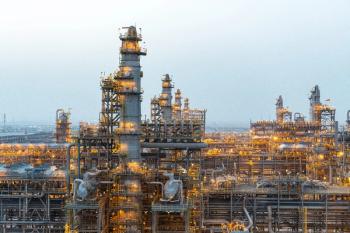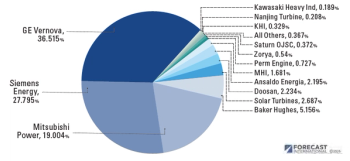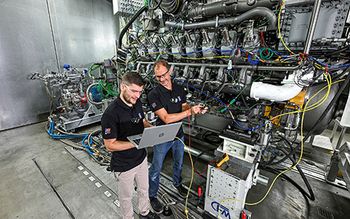
NEW DIRECTOR AT THE TURBO LAB
Dr. Eric Petersen, the new director of the Turbomachinery Laboratory, discusses the purpose of the lab, his immediate plans and developing trends in the industry.
What is the purpose of the Turbo Lab?
The Turbomachinery Lab (TL) is a center of the Texas A&M Engineering Experiment Station (TEES) and part of The Texas A&M University (TAMU) System. First and foremost, the TL is a research center with the mission of providing educational opportunities for working professionals in turbomachinery and educational, as well as research opportunities for engineering students at TAMU. The TL organizes and hosts the Turbomachinery and Pump Symposia (TPS) in Houston, Texas each year. Spin-off symposia have recently been organized and held in the Middle East (METS) and in Asia (ATPS). Additional educational outreach to industry professionals includes short courses and a Turbomachinery Research Consortium (TRC).
What is the TRC?
It is comprised of about 35 companies whose fees go toward consortium-selected research projects conducted at TAMU. The TL center also represents the associated TAMU faculty members who conduct research related to all aspects of turbomachinery.
Tell us about your background?
All three of my degrees are in mechanical engineering. My Ph.D. is from Stanford University, where I worked in the High Temperature Gas Dynamics Laboratory under Professor Ronald Hanson. Prior to returning to graduate school for my Ph.D., I worked for three years at Pratt & Whitney in West Palm Beach, Florida. Post-Ph.D., I worked for The Aerospace Corporation in Los Angeles. I have been a professor since 2001, starting first at the University of Central Florida. For the past ten years, I have been at TAMU as a member of the TL. My research work is experiment-based and has been mainly in the areas of combustion, gas dynamics, and propulsion, focusing on both government- and industry-funded projects related to gas turbines and rockets.
Why did you accept this job as Director of TL?
I have a great deal of respect for Dr. Dara Childs, the previous director who retired. He wants to see the TL continue to thrive. Having someone as director who is also a mechanical engineer from within the TL was an important ingredient for continued success.
What do you hope to
accomplish as director?
Foremost, I wish to oversee the continued success of the symposia. This requires a foundation in traditional TL technical areas. A critical component has been the participation of the technical advisory committees (Turbo and Pump). These are made up of dedicated industry representatives from end-user and OEM companies. My goal is to keep these committees strong. Growth areas will likely come from branching into turbomachinery- and propulsion-related technical areas.
What are your plans for the shows?
The basic formula for TPS works well and will not be altered near term. The TPS is successful due to its location in Houston, buy-in from the industry participants, the quality of the technical and educational events, and dedicated TL staff. We completed the 2nd ATPS in Singapore in March. We are assessing the likelihood and location of a 3rd ATPS in 2020.
What can the TL do to stimulate innovation, help manufacturers
lower costs and make GTs more competitive?
TRC research projects are voted on by industry representatives. Member companies see the latest developments. They communicate to faculty researchers about challenges to solve or predictive models that can help them to remain competitive. Getting industry representatives together during the symposia technical sessions is another platform that brings individuals together to work on the latest problems.
Can you tell us about
ongoing projects?
We have faculty members working on research related to turbomachinery reliability, performance and fundamental understanding of the underlying physics. We specialize in unique test rigs and measurement techniques that can explore phenomena at the pressures, temperatures, and revolutions per minute. One new area involves the design and operation of gas turbines operating in a supercritical CO2 environment, all the way from bearings to combustion. Another new capability is in ultra-high-speed imaging and laser diagnostics. There, we have acquired a burst-mode pulsed laser system and related components.
What turbomachinery
research excites you?
Research within the TL related to the fluid mechanic and gas dynamic aspects of turbomachinery excites me the most.
Newsletter
Power your knowledge with the latest in turbine technology, engineering advances, and energy solutions—subscribe to Turbomachinery International today.





